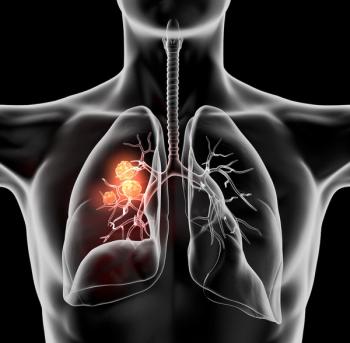
Quizartinib May be Effective in an Older Population with FLT3-ITD+ AML
Mikkael A. Sekeres, MD, discusses how data from the phase 3 QuANTUM-First trial may advance the treatment field for patients with newly diagnosed FLT3-ITD–positive acute myeloid leukemia.
In March 2023, prior to the
Previously,
According to Sekeres, chief of the Division of Hematology at Sylvester Comprehensive Cancer Center of the University of Miami Health System and Communications Committee Chair for the American Society of Hematology (ASH), due to the trial’s age limitations, questions were raised as to howolder adults with this disease should be treated.3 He indicated that quizartinib could be a potential solution, as data from the phase 3 QuANTUM-First trial (NCT02668653) demonstrated the agent’s efficacy and tolerability in a population that included older adults.
Based on the observed benefits among older adults with quizartinib in the QuANTUM-First trial, Sekeresstated that the FDA approval of the agent would be a step forward for patients with FLT3-positive disease over the previous standard-of-care option, midostaurin.
In the QuANTUM-FIRST trial, the median overall survival was 31.9 months (95% CI, 21.0-not estimable) with quizartinib compared with 15.1 months (95% CI, 13.2-26.2) with placebo (HR, 0.776; 95% CI, 0.615-0.979; P = .0324).4
Transcript:
One of the things to think about with the midostaurin approval is that the [phase 3] RATIFY trial, which led to midostaurin’s approval, included patients up to age 59. It really didn't include older adults. It left us scratching our heads in the leukemia community a little bit about what we should do with older adults, and whether those findings in patients up to age 59 translated to patients who are in their 60s or 70s who are receiving cytotoxic 7+3 chemotherapy combined with midostaurin.
One of the things that [the QuANTUM-First] trial does is it shows, very clearly in a population of patients that included older adults, that [quizartinib] was effective. In patients under the age of 60, it appeared to be at least as effective as midostaurin, if not slightly more effective. And, as I mentioned before, it was well tolerated. I do think this represents a step forward for patients who have the FLT3 mutation in association with their [AML] over the previous standard, midostaurin. The RATIFY study completely revolutionized the field and completely changed the standard of care. We've made an advancement in the quizartinib study, as well.
References
- FDA approves quizartinib for newly diagnosed acute myeloid leukemia. News release. FDA. July 20, 2023. Accessed July 20, 2023. https://bit.ly/3K6SH6K
- Midostaurin. News release. FDA. April 28, 2017. Accessed July 18, 2023. https://rb.gy/5pvas
- Stone RM, Mandrekar SJ, Sanford BL, et al. Midostaurin plus chemotherapy for acute myeloid leukemia with a FLT3 mutation. N Engl J Med. 2017;377(5):454-464. doi:10.1056/NEJMoa1614359
- Erba H, Montesinos P, Vrhovac R, et al. Quizartinib prolongs survival vs placebo plus intensive induction and consolidation therapy followed by single-agent continuation in patients aged 18-75 years with newly diagnosed FLT3-ITD+ AML. Presented at: 2022 EHA Congress; June 9-12, 2022; Vienna, Austria. Abstract S100.
Newsletter
Stay up to date on recent advances in the multidisciplinary approach to cancer.



















































































